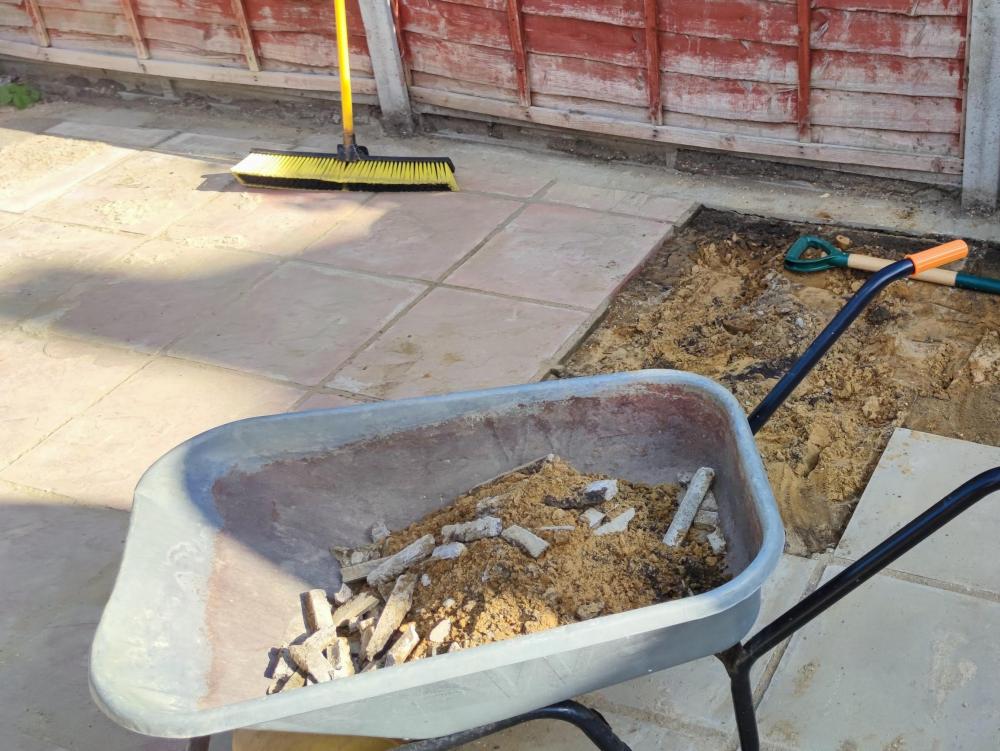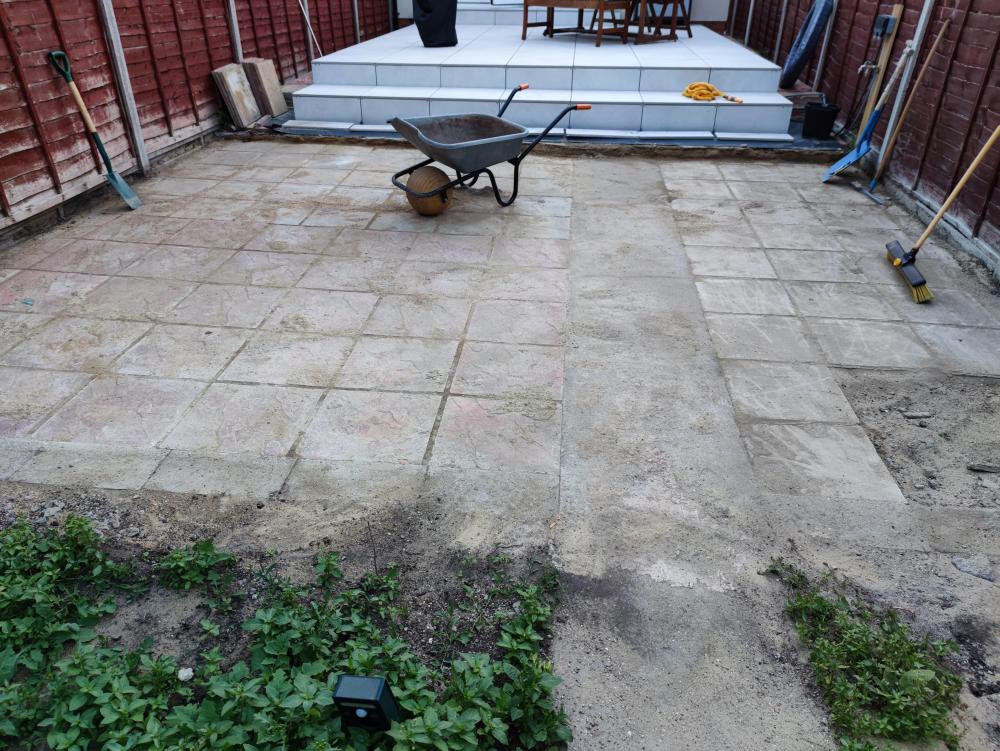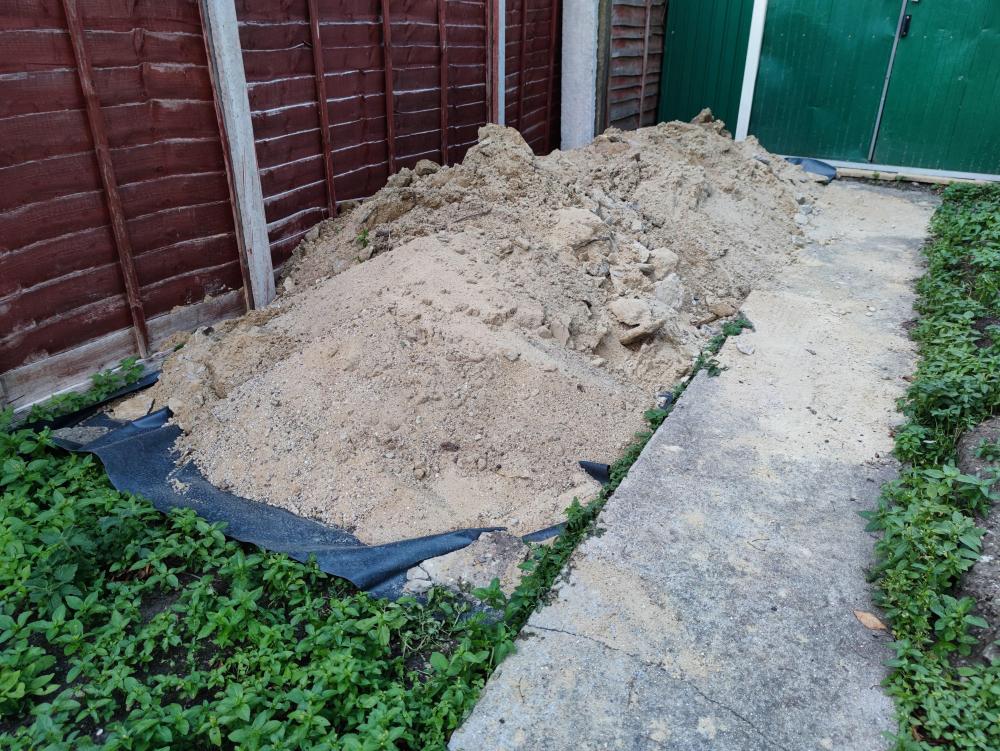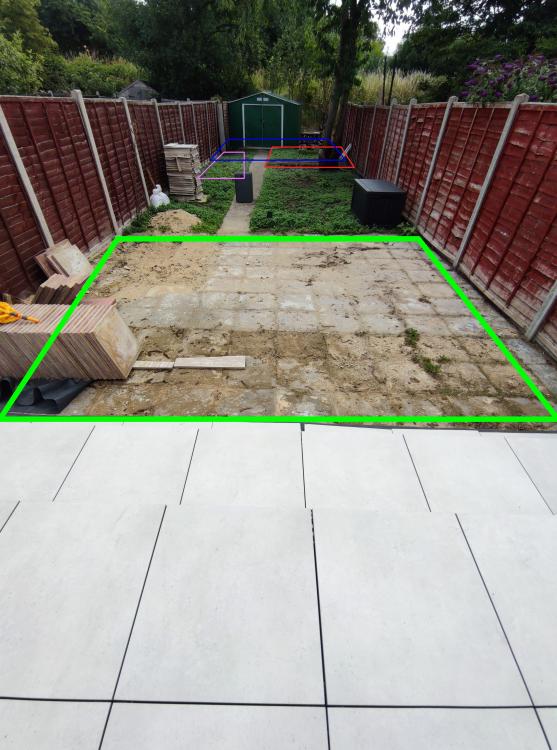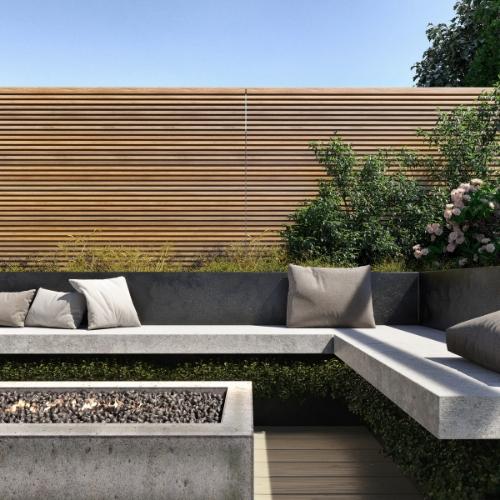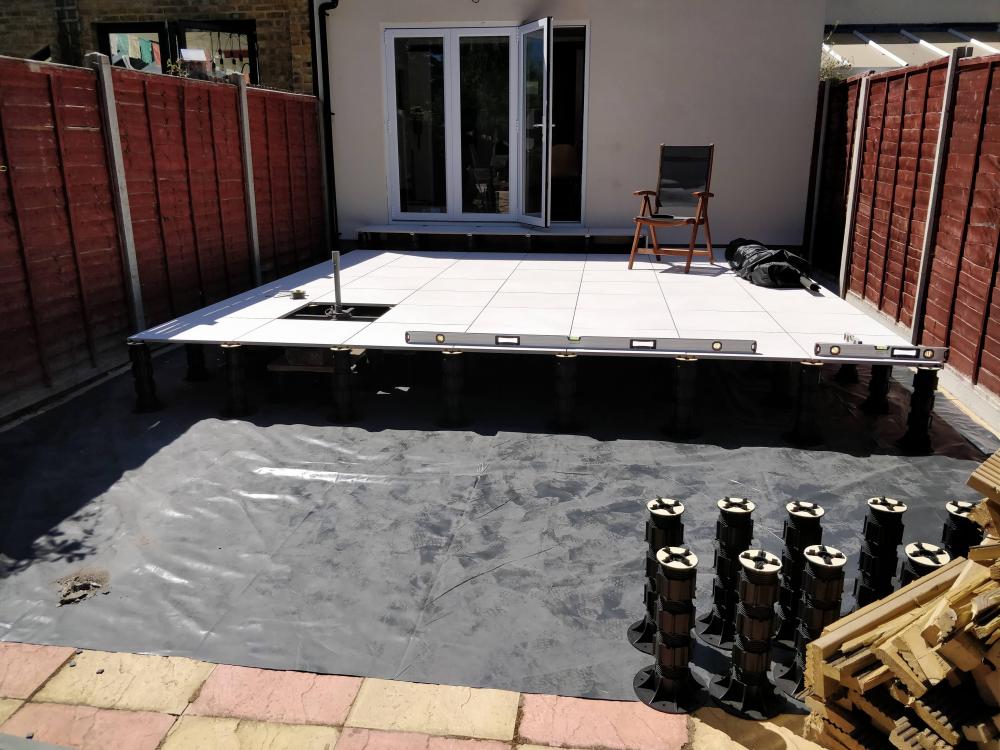
ReX
Members-
Posts
27 -
Joined
-
Last visited
Everything posted by ReX
-
Perfectionism, finishing quality and builders
ReX replied to ReX's topic in General Self Build & DIY Discussion
That's exactly what I thought when I did some projects on my own. But it is not always the case: in many occasions I have seen them not using the right technique, the right tool or even basic common sense. For repetitive builds (e.g. equally spaced wooden battens wall cladding, drawers, stair treads, risers, stringers) I always make templates. It takes a little bit of time but then you proceed fast and have exact consistent measurements. In another case a bricklayer was raising a party wall in the garden. The drawings stated the wall was supposed to be 180m high, resulting in 100cm lower than the existing kitchen extension roof level (I don't remember the exact measures TBH). Well, the guy used as reference the indoor floor level, so the wall built was 20cm lower than the kitchen extension, 80cm higher than it should have been. And the 100cm drop from kitchen extension level was on the drawings. His justification was that he couldn't use the garden grass level as reference, so he assumed the best way was to use the kitchen floor level. He didn't think about using the other measure. I have almost never found a professional (that does this for living) that can do a better job than I could do on my own. Even if I go for "premium" recommended people. Of course there were few exclusion of very good, exceptional people. If you think about it, it is depressing: it is like going to a restaurant (not a fast food) knowing you could have a better meal at home, so only for the convenience of not cooking. Surely it is my luck plus the fact I actually enjoy doing stuff on my own. It seems that the builders I've used and seen in action (also the recommended and friendly ones) were doing their jobs just because they didn't find anything better. I do the same but unfortunately they don't always listen or have even the knowledge to amend (see comment from Visti below). The thing about the instruction manual & talking them through the process makes me smile: I did exactly the same with a carpenter and he was clearly annoyed and surprised a DIYer would attempt to explain him things about his trade. At the end of the first day I noticed he completely ignored what I told him. This was the end of it, I decided to let him go and had to redo the whole thing my own. It is difficult to generalise from a personal experience, but I have seen the same. Also because the local building standards are higher than here, so they are used to more demanding customers. -
Perfectionism, finishing quality and builders
ReX replied to ReX's topic in General Self Build & DIY Discussion
I am in a similar situation, I have had a very positive experience in the past, but recently (in the new house) I was really disappointed with few builders. I try to do everything on my own but there are some large jobs I can't do and the time is also the other issue. Thankfully really few things are left do be done now. I have learnt few things from this guy: https://www.youtube.com/channel/UCzqh_8hImIc9fhvUu0oVC8w In my opinion, the quality of his jobs and the passion in doing them (including explaining mistakes, etc.) is impressive. I would love to hire him but he is based in the US :). He doesn't cut any corner and he takes the time necessary to do things properly. -
Perfectionism, finishing quality and builders
ReX replied to ReX's topic in General Self Build & DIY Discussion
I think this is one of the main problems. But actually Nick is right, with very few exceptions I have always struggled to find professionals that could do better than my DIY attempts. Surely faster but almost never better. I reached the conclusion I am just unlucky in researches. -
Perfectionism, finishing quality and builders
ReX replied to ReX's topic in General Self Build & DIY Discussion
Fully agreed. I have seen many expensive houses with incredibly cheap finishes, but apparently many people don't care. This is true, but I didn't hire cheap labour, but people that work also on multi-milion houses. Good point but it shouldn't be a justification, especially in a sector that lives also of recommendations and reviews. -
Perfectionism, finishing quality and builders
ReX replied to ReX's topic in General Self Build & DIY Discussion
You are right - I rushed my reply. Indeed the contract stated that the tiles would hav been installed with the same tolerance, accuracy and gaps of the existing floor (that was perfect, the only tile slightly not leveled is not even 1 mm above the next one). We are talking about joining the floors of two rooms, they had to remove the tiles that were cut (next to the wall that was removed). In doing so (using the wrong technique) they chipped existing tiles that were not supposed to be removed. This tiling drama was sorted by another tiler that had to remove everything (new tiles and existing chipped tiles) and redo the job. I am not familiar with all this, so very interesting - thanks for sharing. I have to say that when I saw a friend of mine house being built in Switzerland, the building approach was very different. Everything moved slowly compared to here but each trader was responsible for the build and quality of their own part. The only person with an oversight of the site (coming from time to time) was the architect that did the drawings. Indeed I feel like a hawk and I don't like it (it is annoying for me and the person that is doing the job). I try to do as much as I can, but in some cases you need manpower and time. Makes sense, but in my case I am talking about stuff that can be done properly with some common sense (no external dependency). I was thinking about this when I did the staircase, experimenting my own design. It took me so much time (including building a prototype) that it wouldn't be sustainable (or economically viable) to for a client. But the issues I am talking about in this post are way more basic, hence the frustration. -
Perfectionism, finishing quality and builders
ReX replied to ReX's topic in General Self Build & DIY Discussion
Fair suggestion, but - to give you an example - I wouldn't expect to write on a contract: "the floor tiles should be perfectly leveled, the 3mm gap should be consistent (not only when you feel it) and you shouldn't chip the existing tiles". I would expect this to be by default the normal outcome of extending an existing tiled floor. Or to give another example, during the installation of a steel frame box (to replace a load bering wall) I found by chance that the builders had inverted the lower beam and the upper beam. This happened just because the beams drawings were left on the floor and looking at it for a second it was clear that the lower beam had additional steel to sustain the weight of the side posts. Thankfully they hadn't yet removed yet the acros and reinstalling it properly was quick. How can you possibly prevent these issues with a contract? This was the root cause for at least two jobs, in one extreme case every day new people were sent to do the job and they had no idea about what we had discussed earlier. In another case I hired main contractor / PM (not sure how to call it) to look after the job and the builders but he was on the site 20% of the time, so he wasn't really checking anything (he had 3 jobs in parallel). It seems then that I am not alone. -
How do you deal with builders and specialists that don't deliver the quality you expect? I have always used recommended builders and contractors, that have worked on projects and houses much larger (and more expensive) than mine, but unfortunately I have never been happy with their work. Most of the times I had to step in during the job and ask, suggest (or even do myself to show how it should be done) what I was expecting from them. I am conscious that I am very demanding and perfectionist, but it is disappointing to see how little care and precision is delivered if the customer is not there to chase them. Eventually I reached the conclusion that it is better for me to do stuff on my own (tiling, plastering but also plumbing, electricity, bespoke staircase, bespoke furniture - these are few of the examples) than let someone else do the job, keep an eye on the job and then end up fixing or correcting the errors (if possible). Unfortunately I don't have the time neither the energy to do large jobs on my own, so I am now back again with a builder that is doing stuff more poorly than I could do on my own. Is there an etiquette to deal with these situations? I don't want to be rude toward the builder (that is very nice and friendly) but knowing myself I will be bothered to see a finished product not as good as I would like.
-
Very interested in looking at the result. Is it doable also with redwood? By the way, between redwood and cedar, which one would last longer for fencing?
-
So, the timber included in the quote is this redwood. I have seen it installed at our neighbors and it looks quite nice. But after 6 months it is difficult to judge how long it will last. So far the color is still as new. Not sure if it has to be stained to avoid color fading or the pressure treatment makes it unnecessary. An alternative that will cost about 4.9 per meter is this one with composite battens. Has anyone experience with composite fences?
-
Was the cedar untreated? Did it stabilise as in this picture or it changed? By the way I really enjoyed your blog - very informative and cool house! How often does it need to be stained? Okay, so it seem oak is more durable. Where is redwood in the chart? Which wood would be classified as very durable?
-
Hi, For the new bespoke fences, the landscaper I want to use suggests to use oak but many websites talk about Siberian larch What are the main differences? I am looking for a long lasting solution, requiring reduced maintenance and that doesn't fade or become grey / silver. Thanks
-
Digging and swapping soil for sand - work estimate
ReX replied to ReX's topic in Landscaping, Decking & Patios
Thanks, very informative and you make it seems so simple :). Unfortunately it seems to me that it requires to carry trough the house a lot of heavy material, that I would like to avoid. An alternative I was considering is self install ground screws: https://www.groundscrewcentre.co.uk/products.asp?page=calculator&structuretype=Garden Office https://www.ukhelix.com/product/eco-diy-manual-install-screw-piles/ And then fix the timber base or the SIPs panels on top. I don't have any experience with these screws so I wonder if they are really so easy to install and if they last as long as a classic concrete base. I guess the gap issue will be also with the ground screws solution above. I'll have to look carefully if we have any perennials (not an expert). Would it be okay to do another round of weedkiller and then after 2 weeks roll the turf? Do I need to prepare the soil for the turf? I have started removing the last layer of slabs, there is still some more sand (see picture). A very thin layer that is mixed with the soil (it is almost impossible to remove the sand without digging out also some soil). Do I need to remove it before installing the turf? -
Digging and swapping soil for sand - work estimate
ReX replied to ReX's topic in Landscaping, Decking & Patios
Resolva 24h. They die but then then come back. -
Digging and swapping soil for sand - work estimate
ReX replied to ReX's topic in Landscaping, Decking & Patios
I plan to have a more modern look :). To add more colour: my original plan (now under discussion because it will take to much effort) was to buy cladding panels from Rockpanel (2440 * 1220) and cut them in stripes of variable height (between 5-10 cm), in the shape of "waves" that I would then fix against the old post, creating a sort of horizontal random stripes look. The space between each stripe should be about 2cm. The wave look and the random finish was intended also to hide the fact that the original fences are not exactly in line. To cut so many panels in some many pieces I intended to buy this CNC machine and do the design of the stripes in CAD: https://www.maslowcnc.com/ -
Digging and swapping soil for sand - work estimate
ReX replied to ReX's topic in Landscaping, Decking & Patios
To my surprise, we managed to lift and move all the sand from the green area to the pink area, in about 4 hours. It wasn't just sand but also some solid concrete, but while it took time to break it, it was also easier to pick those large pieces (compared to the other find sand). The old tiles that were buried under the sand are now exposed, I need to lift them and fill with the soil from the former flowerbed in the blue area. I lifted some of them and this time underneath the tiles there should be just soil, no more sand or concrete. I'll leave the path as it is and lay on top the new tiles. I have two options on the table now: SIP kit or "lightweight metal C stud" kit. With SIPs the floor panels could sit directly on top of ground screws or concrete. If I get the lightweight metal frame, I will need to build my own base (it is not provided). Any suggestion? Quadrabase is ultraexpensive and I would like to avoid concrete. I am not sure I understand: could you explain it once again? Any suggestion on how to get rid of the weed? I keep killing it with weedkiller but it comes back after heavy rain. Once killed (again), if I roll the turf over, will the weed continue to grow trough the grass? If so, how do I kill it without killing the grass as well? -
Digging and swapping soil for sand - work estimate
ReX replied to ReX's topic in Landscaping, Decking & Patios
1 meter wouldn't fit. But in general I am terrified by the idea of carrying heavy stuff through the hallway. I had 2 bad experiences with "recommended" builders damaging walls, tiles and doors. I had to replace brand new stuff just installed (and everything was properly protected). A friend might be able to help me this weekend. Let's see how far we get. Thanks -
Do you mean something cheaper than Siberian larch? Something like this? https://www.wickes.co.uk/Wickes-Treated-Sawn-Timber---22-x-47-x-3000-mm-Pack-of-8/p/133672
-
Hi, As mentioned in another thread, I am renovating the garden and I need some guidance on what could be the effort of my next move. Based on that I will decide if I need to hire someone or just get some help from a friend (I have never done any digging if you exclude the one necessary to put up a beach umbrella). I have lifted the old garden slabs from the green area (5.5*5.5 meters) and I found below 10/20 cm layer of compacted sand sitting on another layer of slabs sitting directly on the soil. The multiple layers of buried slabs remind me of previous civilisations, but I suppose it was just the last 2 owners :). I've started digging (see top left corner of the green area) and even if seems very compact it is easily breakable. Here what I want to achieve: move all the sand from the green area to the blue area (at the bottom of the garden) and fill the green area with the soil that is now in the read area (it was 20cm high raised bed with concrete walls that are now gone). The blue area is going to become the base of a garden office (about 5*5m). On top of the sand I could lay over the old slabs. The rest of the garden (with the exclusion of the path) will be grass (now it is weed). As the old shed is now loaded with tons of stuff and I won't manage to empty it and install the garden office this summer, I think I could temporarily store the sand in the pink area (laying it over a plastic sheet to avoid it spreads over the soil). How many days do you anticipate it would take for 1 or 2 people? If I hire someone, what could be a reasonable cost? My goal is to minimise the amount of stuff I need to carry through the house, so reusing existing soil, sand, slabs is my top priority. Thanks!
-
Having a look at them, I think the vast majority can be sorted in this way but 4-5 should be digged out and reinstalled because they are so out that also the panels tend to move. As for the battens to get the effect I want, would Siberian larch be a good choice?
-
That was the main reason for asking for wood options. With the first composite product it would cost me around 10k just for the cladding (50meters, 180cm high). Good to know. These fences have the same design of the ones I have now, I am looking for some more modern look (like in the picture attached). Few reasons I am a little bit more incline toward cladding: I could leave some non perfect posts as they are and just fix the really bad ones (less digging) No need to carry through the house 20+ old panels and 20+ new panels (this is the only access to the garden) I could hide the unpleasant concrete posts and have a final look as in the link above. And pretty much I could consider to do the job myself. I like it - no digging and no concrete heavy lifting. If I do as you suggest I could have the timbers posts all in line and fix the cladding against them. Which pre-treated wood battens should I get to get a finish as in the picture attached? Will it last?
-
Hi, I have a narrow and long garden (5.5m * 25m). The fences have concrete posts, concrete gravel boards and 1.83*183m wood panels. The fences are 3 years old but not properly installed, especially on one side, the posts are not even in line (not sure how the previous owner did it so poorly). I want to give the whole garden a new modern look (e.g. I've just finished the new tiled deck and will soon install GRP planters). What would you recommend between: fix the current concrete posts (at least the ones that are completely out of line) and clad them on my side (leaving the existing panels and posts). The cladding will be fixed to the existing concrete posts (I have seen metal clamps for this) replace the whole fences, posts and boards with a modern solution Both fences are shared, but on one side the neighbour is not willing to contribute to the upgrade and on the other side they would like to split if we match the design they have on their other fence (I am not very convinced - it is all wood, see below). In case of cladding, maintenance and replacement of the wood panels can happen by pulling out the panels from the top and slotting them in, when needed. Additionally, I don't want to deal with rotten/greyed wood and wood treatment so I was keen to use composite products. I really liked: https://ecoscapeuk.co.uk/products/composite-cladding/slatted/ or https://www.pavingsuperstore.co.uk/garden-and-landscaping-materials/garden-landscaping-materials/garden-fencing-gates-trellis-and-screening/ecoscape-uk-composite-fencing-kit-cedar.html (as cladding) or https://www.envirobuild.com/collections/composite-fencing (as new panels and new posts). Any cons of using composite products? Is there otherwise any wood that will last (or even outlast) composite products without the need of painting it on regular basis? Maybe pressure treated Siberian larch? Thanks
-
It was supposed to be fully renovated + patio build
ReX replied to ReX's topic in Introduce Yourself
Thanks, that could be an option, if I managed to get 15 delivered. I wonder what could be the tickness. I think I might need to hire a gardener, not just for the planters but also to sort out the remaining 15-18m of garden on which we would like to have grass. The garden was infested with weed that took over the grass. We though we managed to kill the weed over the course of 1 year (with multiple rounds of weedkiller) but we only killed the grass. As soon as it rains the weeds grow, in just few days. It is not bad as it was (it was a jungle originally), but still there is a lot of it. I think that even if we get new grass/turf, it will be ruined by the weeds quickly. I am almost convinced I would prefer high quality artificial grass, but my partner is against it.- 17 replies
-
- garden design
- tiles
-
(and 2 more)
Tagged with:
-
It was supposed to be fully renovated + patio build
ReX replied to ReX's topic in Introduce Yourself
I found contradicting info on the topic, but there are tests that confirm they are fine below ground and under DPC (e.g. https://www.forterra.co.uk/resources/news/article/2014/12/can-i-use-thermalite-blocks-below-ground). Indeed the 300*440*215 blocks are supposed to be "foundation trench blocks" (I am not an expert but I think that these go below DPC). My preference is due to the weight, as I am going to do it on my own (due to covid I am not keen to invite people in). Do you know if 800*400mm or 900*400 or 600*400 slabs exist? I tried everywhere but I could only find porcelain tiles or slates in this size.- 17 replies
-
- garden design
- tiles
-
(and 2 more)
Tagged with:
-
It was supposed to be fully renovated + patio build
ReX replied to ReX's topic in Introduce Yourself
Yes, to be specific the planters will be as follow (for each side): 1 planter of 60 (length) * 40 (width) * 60 (height) cm 4 planters of 120,4 (length) * 40 (width) * 60 (height) cm 1 planter of 60 (length) * 40 (width) * 100 (height) cm The 0.4cm accounts for the grout gap between two 60cm tiles. From the list above, the planters 60cm tall will sit on the 540cm long base, while the planter 100cm tall will sit directly on the ground and will be paired to the step you see int he pictures. There is no wobble, but there is a micro slippage of some peripheral tiles. I can tell that the tile gap expands from 4mm to about 5mm in some points. This really annoys me! I am convinced that the slippage is caused by the fact that the pedestals compensate for the uneven / sloped floor with a self levelling head, but the body of the pedestal itself is actually perpendicular to the sloped floor, so there is a tendency to shift in the direction of the slope (not sure if my description, in my own English, makes sense). This doesn't happen with the central tiles, as they block each other. Eterno suggest to glue the metal insert that you put between the head of the peripheral pedestals and the tile, but the reason is mainly to avoid noises caused by metal against ceramic. Yes, each side is four 120.4cm section and one 60cm section (see above), plus the 60cm section that sits on the ground. Not sure I got that...! Are you suggesting to put the blocks flat so that they are 100mm tall (from the floor level) and the remaining height is sorted with the pedestals? I was actually planning to buy 300*440*215 blocks, lay down (on the 440*215 face) next to each other (so I would need 5400/215 = 25 blocks) to have 300mm height and close the remaining 70/140mm with the pedestals. Alternatively, if I lay them down along the 300*440 face, I would only need 5400/300 = 18 blocks and the height will be 215mm, with the rest to be closed by the pedestals. Unnecessary? I like the idea of composite decking boards (I don't like heavy lifting). Will they last "forever"? As you say, I won't move the planters again, so I won't want the boards underneath to rot. Alternatively, on top the pedestals I'll put 400 slabs (I still have plenty to dispose). I was also thinking about pulling wires in cross, to pull the pedestals against each other, but this would make the maintenance harder, as once one tile is lifted it won't resit easily again. Yes, that's exactly the kind of product I use from Eterno (self levelling heads), to compensate the slope (see above), but I was sceptical about using pedestals under the planters, due to the risk of movements. BTW the reason I went for Eterno and not Wallbarn is because you can fine tune the height without removing the tile/slab, using a key from the top (https://www.pedestal-eternoivica.com/it/prodotti/supporto-regolabile-autolivellante-per-pavimento-eterno-con-testa-in-bimateriale-pp-gomma). But I think we both agree that short pedestals plus the weight of the planters should do the job. I know close to nothing about gardening and plants in general. Are the holes necessary?- 17 replies
-
- garden design
- tiles
-
(and 2 more)
Tagged with:
-
It was supposed to be fully renovated + patio build
ReX replied to ReX's topic in Introduce Yourself
I googled but it seems a very heavy item to move around. I actually need to build only the bases, as the planters will be in GRP. I think this is what I am going to do! How to level the surface below? I read it is possible to cut 100mm aerated blocks easily, but I think it will be a real pain to cut 6m + 6m of 300mm blocks. Once I lay down the 300*440*215 blocks, what do I put on top of these and below the 400mm slabs to level the surface? I could use the same pedestals I used for the patio, but I wanted a more solid structure (less incline to lateral movement). Or I could screw or glue the pedestals (to both the blocks below and the slab above) and trust the weight of the filled planters. If you look at my last picture, the tiled area is about 50cm distant from each fence. On the two sides of this area I want to build 40cm solid bases, reaching about the same height of the tiles (3cm below), keeping a distance of about 10 cm from the fences. This area is long 6 meters and the planters will cover the whole length. The 10cm gap allows for the maintenance, including removing and inserting the panels when needed. I agree with your comment about the gravel boards but the 10 cm gap avoids pressure to the fence and build out of damp (hopefully). I forgot to mention that before installing the planters I will either change the fence panels or install horizontal cladding (in stripes) on top (cladding from Rockpanel). The whole patio / tiled area is built with a similar system (Eterno Ivica self levelling pedestals, I've attached a picture of the work in progress), but I wanted to give more lateral strength on the two sides (hence the two solid bases). Mainly because the tiles are not glued and the height is over 30cm. Having said that, it is rock solid, so no movement at all. Maybe I could go ahead with the hybrid (aerated block + short pedestal + tile) solution described above in my reply to Temp. As the pedestals will be only 10cm (if not less) tall and glued down, any lateral movement should be impossible.- 17 replies
-
- garden design
- tiles
-
(and 2 more)
Tagged with:


